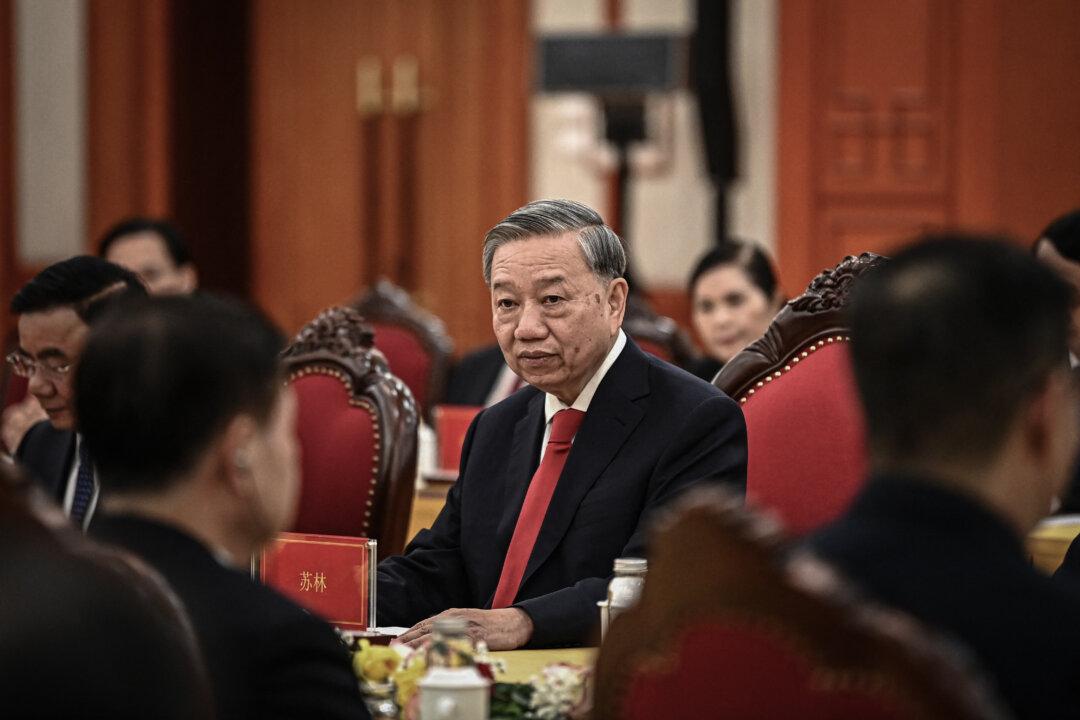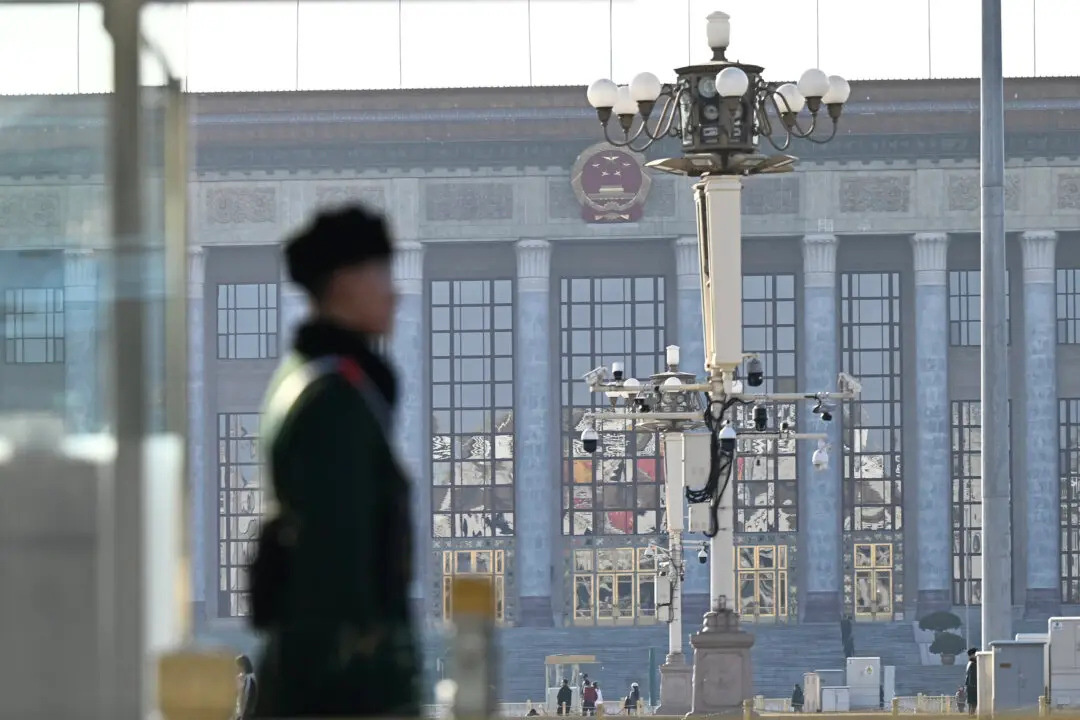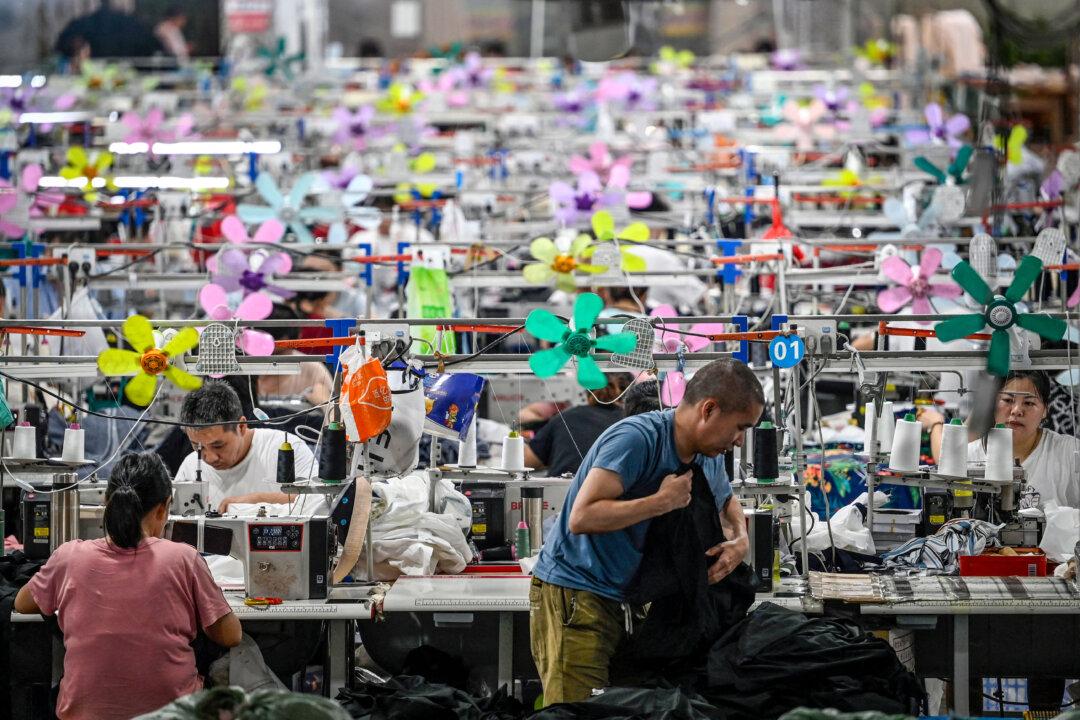Ahead of the closely watched 20th National People’s Congress of the Chinese Communist Party (CCP), beginning on Oct. 16, cities across China have ratcheted up COVID-19 curb measures.
As of Oct. 10, at least 36 Chinese cities have been placed under some level of restriction or lockdown, affecting some 196.9 million people, up from the previous week’s 179.7 million, according to an estimate by Japanese bank Nomura.
These cities account for nearly 20 percent of the country’s gross domestic product, the bank states.
Residents Can’t Leave Neighborhoods
Shanghai, a metropolis that went through a two-month lockdown this spring, has closed leisure and entertainment venues in three of the city’s districts, despite that only two COVID-19 cases were reported outside quarantine centers on Oct. 10.Officials also designated several residential communities as medium-risk areas, where residents are barred from leaving their neighborhoods.

Across the country, entire regions have been locked down, from small cities to counties. Among the latest areas entering a lockdown on Oct. 11 was Wenchuan county of southwestern Sichuan Province.
Starting at 7 a.m. Oct. 11, the county’s 82,000 people weren’t allowed to leave their homes without permission, local government-backed media reported. The order came after Wenchuan registered one preliminary COVID-19 case on Oct. 10.
Despite the economic toll, the CCP made it clear on Oct. 11 that the country will continue its zero-COVID policy, which aims at eradicating every infection among communities through the use of repeated testing, swift lockdowns, and mass surveillance.
On Oct. 11, state mouthpiece People’s Daily promoted the zero-COVID strategy and urged people to remain committed to it for the second day in a row.
The pressure on officials to get outbreaks under control has risen as the Party’s 20th National Congress approaches. During the conclave, Chinese leader Xi Jinping is expected to secure a record-breaking third five-year term in office, while the new top leadership will be unveiled.
In some drastic responses, regions with even no COVID cases have been placed under lockdown. In Yongji city of Shanxi Province, the authorities announced a three-day lockdown starting from Oct. 7, even though they acknowledged that “there [was] no outbreak.”
The stringent enforcement of the regime’s zero-COVID policy has sparked criticism on the microblogging platform Weibo, with some users mocking officials as being crazy in showing loyalty to the Party.
Other provinces and regions have also halted transportation or residents’ movement, including far-western Xinjiang. Officials there have suspended trains and buses from entering and leaving the region of 22 million people since Oct. 7.
In nearby Inner Mongolia, a hotspot in the latest wave, travelers and vehicles were banned from entering the capital city of Hohhot starting from Oct. 11, according to a government notice.

For millions in China, lining up for white-suited health care workers to have their throats swabbed every one or two days has become a new norm.
In Shanghai, all of the city’s 16 districts have been ordered to test residents twice a week before mid-November, the authorities said in a notice published on Oct. 10.
The central city of Zhengzhou is to test its nearly 13 million people every day, with people required to present a negative result on a PCR test taken within 24 hours to take the subway and buses or to enter other public venues, according to an Oct. 11 notice.
Despite the swift measures, the daily counts hit a two-month high on Oct. 11, with China’s national health commission reporting 2,089 new local infections in the previous 24 hours, the most since Aug. 20.
State Media Pushes Zero-COVID
Official media emphasized on Oct. 11 that the country must stick to the zero-COVID approach.“Dynamic zero-COVID has the lowest overall social costs and is the best anti-epidemic approach for timely control of the epidemic in China at the current stage,” a commentary published by People’s Daily on Oct. 11 reads.
State news agency Xinhua followed up.
“Epidemic prevention and control must not be relaxed,” reads a separate commentary in Xinhua on Oct. 11. It calls on people to reject “lying flat,” a term CCP officials often use to refer to living with the virus.
“In the face of a complicated pandemic situation, it’s vital to overcome paralyzing thoughts and war-weariness,” it states.

Stockpiling Food
The widespread restrictions have renewed lockdown memories, especially those in Shanghai, where green fences reappeared outside locked-down housing blocks.“I’m making preparations, stockpiling rice and noodles,” a Shanghai local surnamed Wang told The Epoch Times on Oct. 9. “I don’t know exactly what is happening, but [I believe] the trouble is back again.”
For Wang, the COVID-19 prevention policy is more frightening than the virus itself.
The authorities, according to Wang, casually designate residents as “close contact” or turn their health code to “red.” A red code on a COVID app, indicating a potential patient, means that the carrier loses access to public life—from public toilets and shops to train stations—and faces mandatory quarantine in state-run isolation centers.
“There’s no way for you to prove that you’re not [infected],” Wang said. “We are like lambs to the slaughter.”
“[The restrictions] are definitely not necessary, as [COVID-19] symptoms are weaker than those of a cold,” said Xu, who lives in Minxing district. “[The officials aim] to control us as the meeting is approaching. That’s their purpose.”
Xu expressed doubts about the officials’ narrative, saying the authorities have already tightened controls over internet speech.
“Who knows whether [officials’ explanations] are true or not?” she told The Epoch Times on Oct. 11. “[We] can’t say too much, as the police could come to us immediately. We’re living in prison.”




